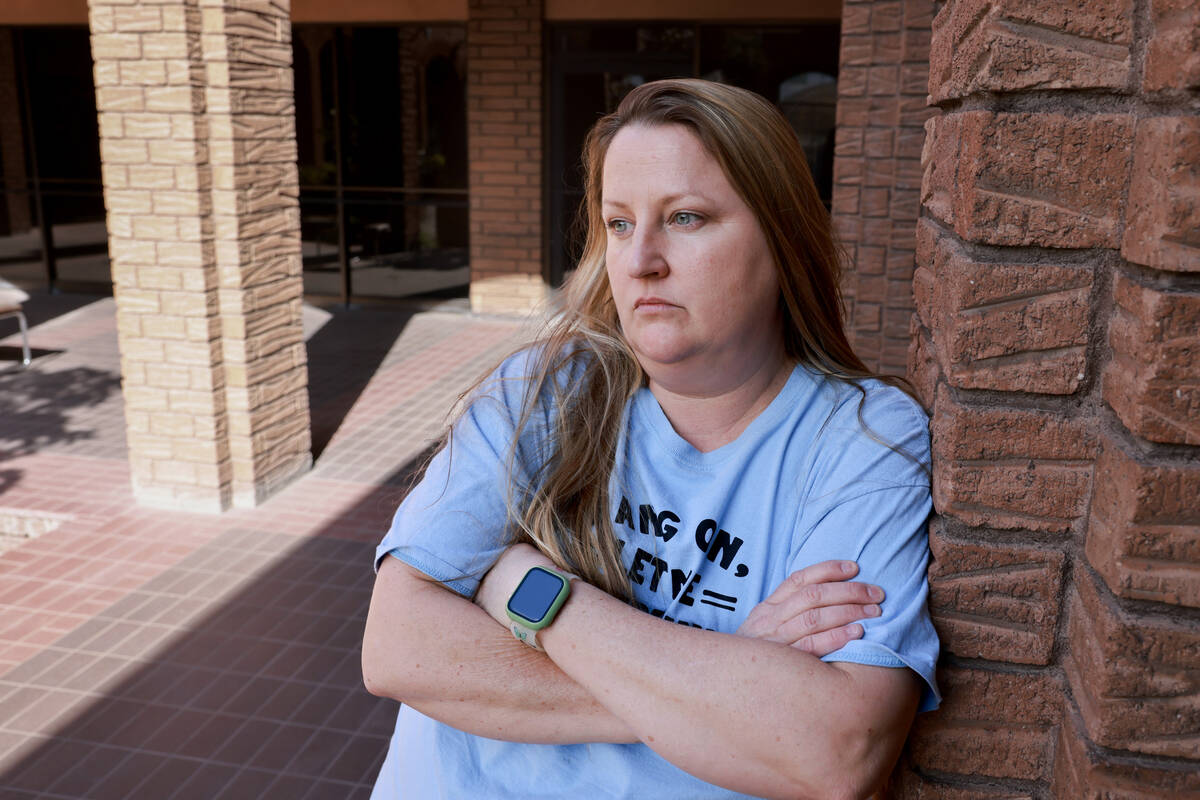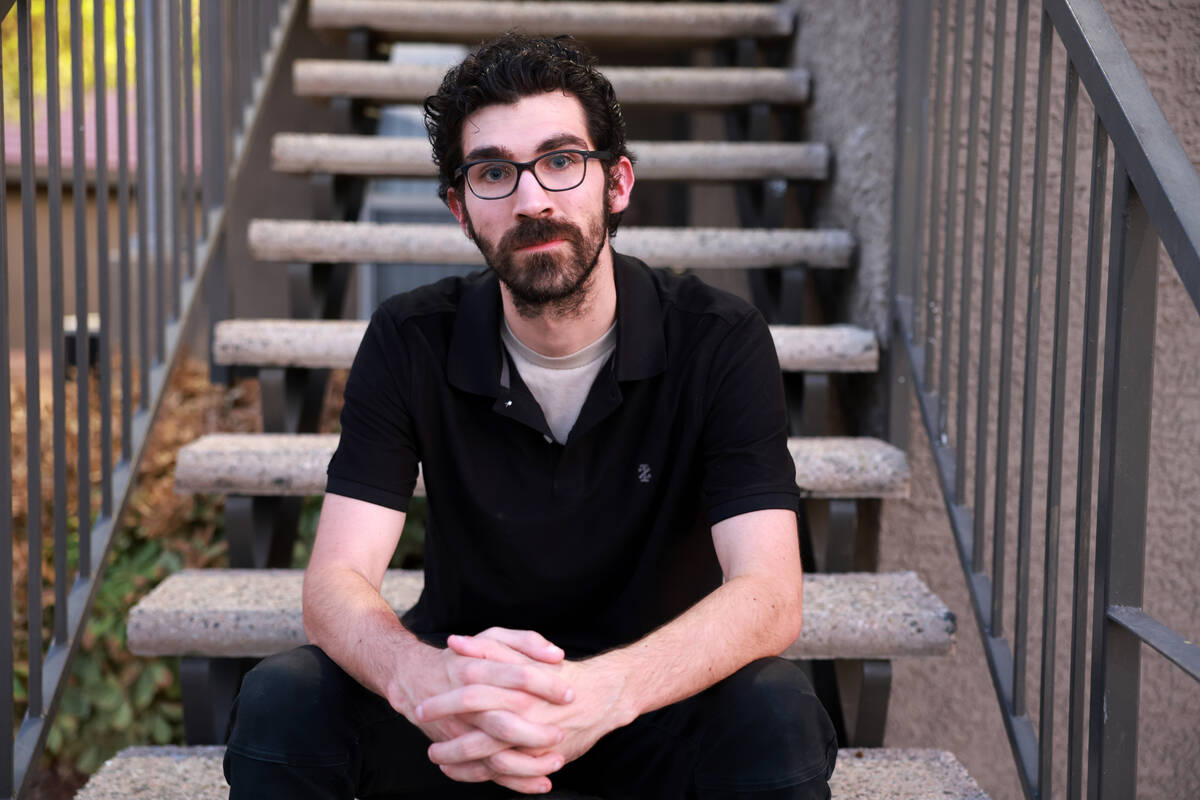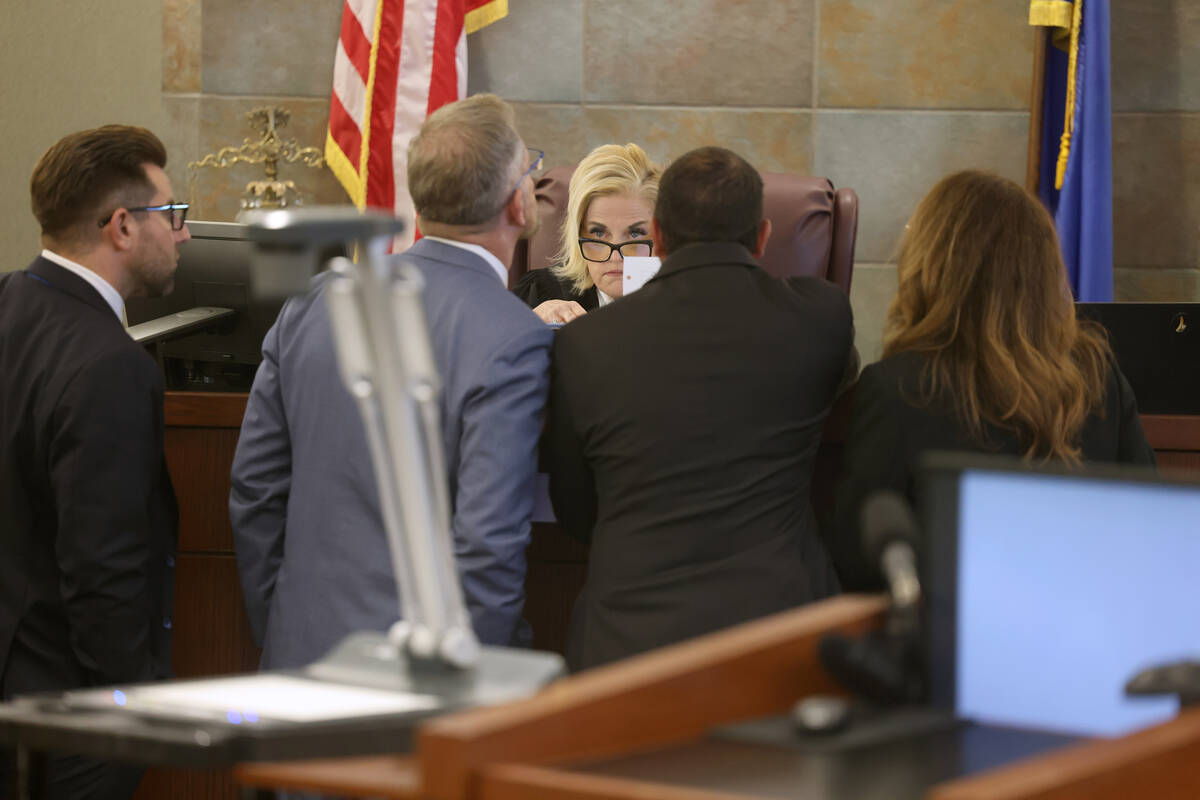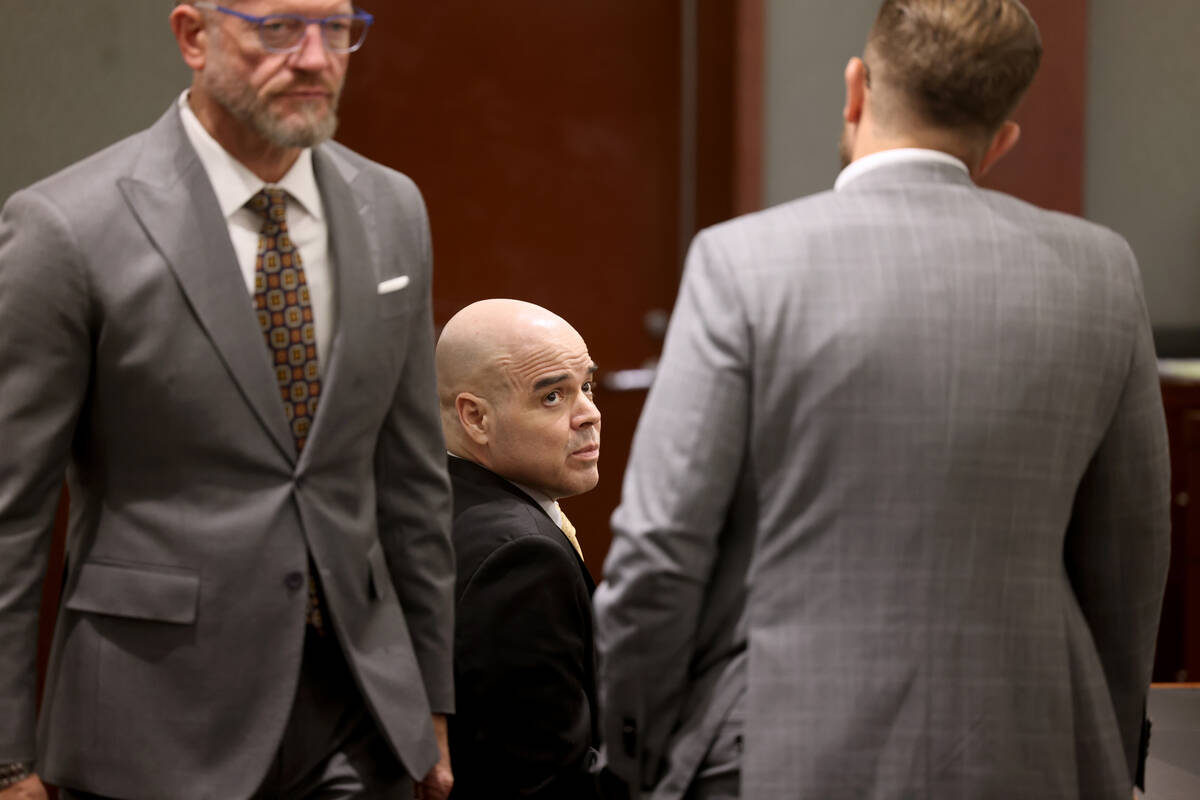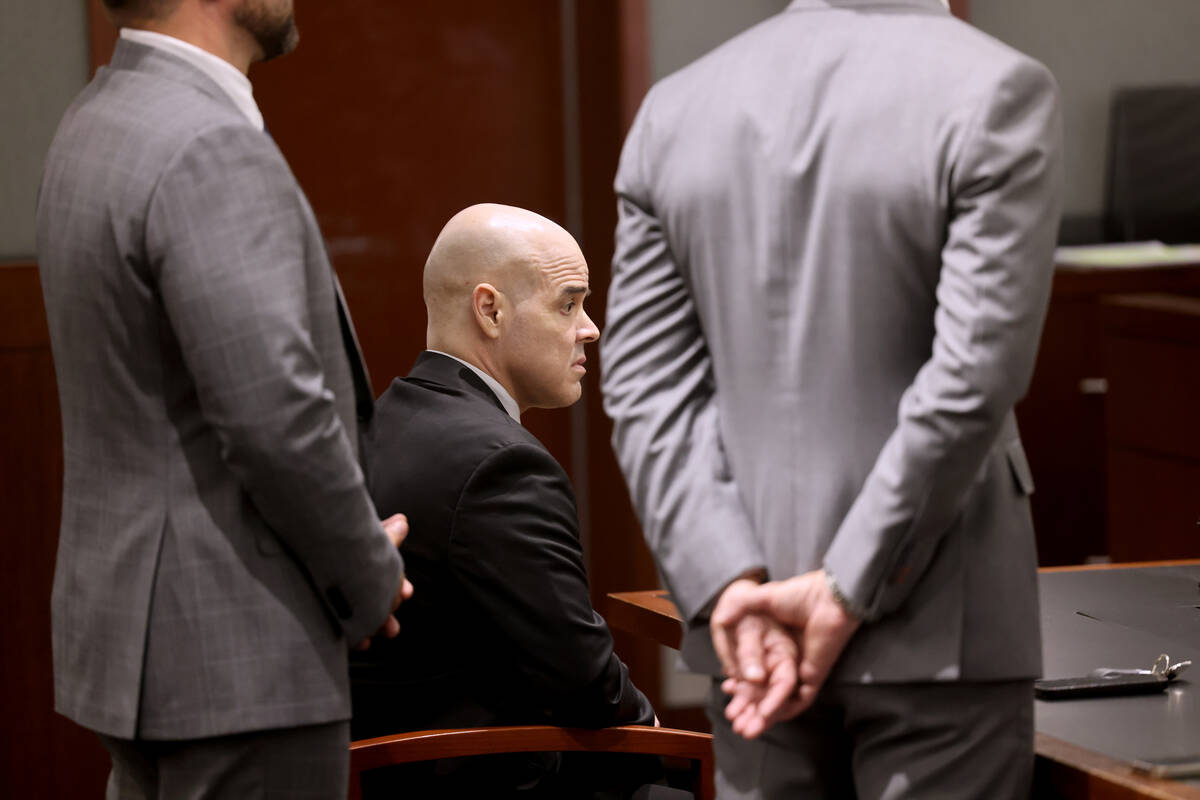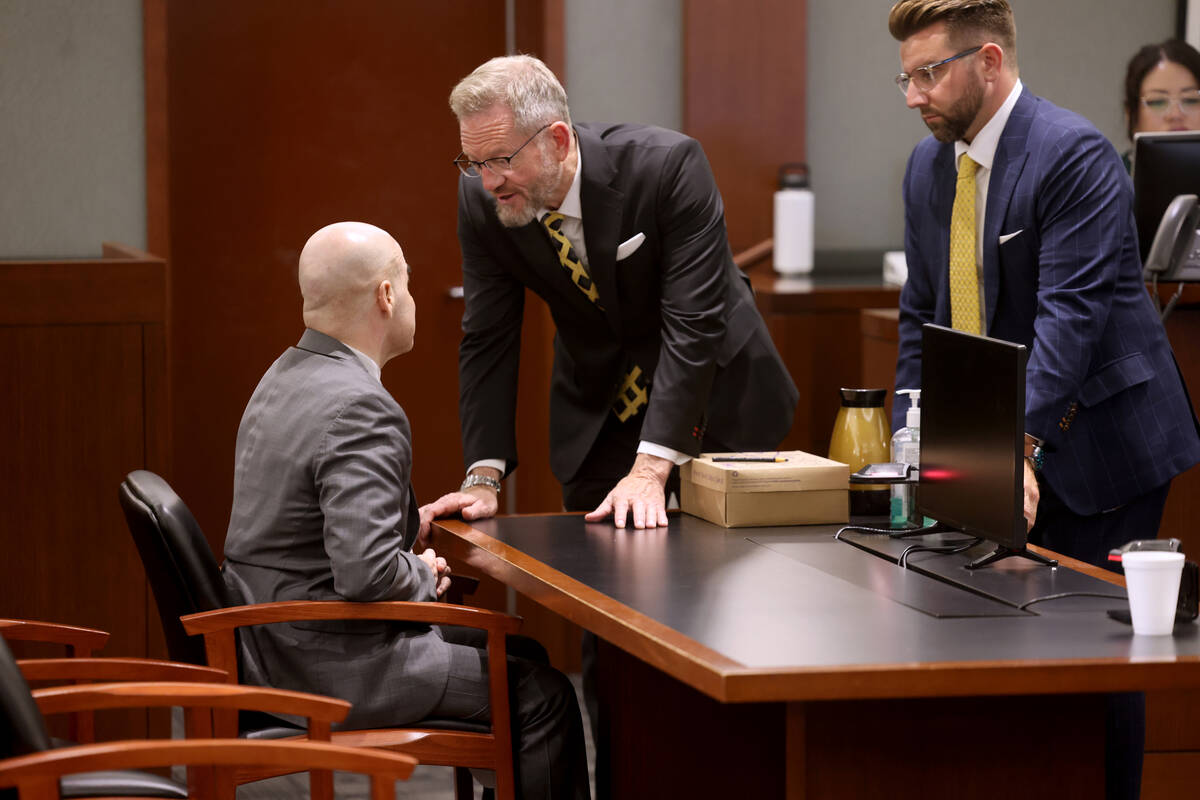Telles’ testimony ‘did so much damage’: Jurors describe how jury reached guilty verdict
Several jurors told the Las Vegas Review-Journal on Friday that Robert Telles didn’t help himself by taking the witness stand at his murder trial.
“When he got on the stand and testified, he just did so much damage,” Henderson resident Sara Patterson said. “It was the worst thing he could have done.”
The jury convicted Telles of first-degree murder this week for fatally stabbing Review-Journal investigative reporter Jeff German, who had written stories about his misconduct as the Clark County public administrator. Patterson was one of three jurors, including foreman Gregory Whitney, who spoke to the news organization during a phone interview Friday.
Before they reached their verdict Wednesday, jurors reviewed the evidence and compared notes, Patterson said. They were swayed by a key piece of evidence — Telles’ DNA under German’s fingernails — and the similarity between Telles’ gait and that of the assailant.
Telles was sentenced by the jury to life in prison with the possibility of parole after 20 years.
“It’s so stressful,” said Patterson, 47. “I can’t even explain how much pressure and weight it is to have someone’s whole life in your hands and his victim’s family that deserves answers. And if there was any doubt in my mind that he didn’t do it, I would’ve hung that jury. I would’ve. I felt a great feeling of peace come over me once I had really decided, this is undeniable.”
Problems with testimony
In what experts saw as an unusual move, Telles took the stand at his trial and spoke to the jury in narrative form, meaning his attorneys did not ask him questions.
Former Clark County District Attorney David Roger previously said it’s a way for attorneys to avoid the ethical problems with perpetuating testimony they know to be false by asking questions.
“He might have had a shred of a chance if he had not gotten up and testified,” Patterson said during an interview at the Review-Journal, where German had worked as a reporter since 2010.
It seemed strange that Telles wasn’t asked questions, she said, and he contradicted himself in his own testimony.
He said he didn’t know how German died until the trial started, but he’d represented himself previously so he would have had that information. And he talked about going on a walk on a 100-degree day, which was hard to believe, she said.
Juror No. 6, who spoke on the condition she not be named because of concerns about being associated with Telles or the trial, said a probate court video didn’t show what Telles said it would. She also thought a cut on Telles’ finger could not have been suffered while preparing chicken fried rice, as he claimed.
Whitney, 30, the jury foreman, said Telles’ testimony convinced him of the man’s guilt because of all the holes in it.
Patterson thought he seemed coherent, though.
“It made me have a hard time with how stupid the mistakes were, to leave evidence in your own garage five days after you kill someone,” she said.
She said there was ultimately no evidence of the conspiracy Telles described, in which he alleged that a real estate firm had worked to frame him for the murder.
In the jury room
When jurors began deliberating, they took an anonymous vote.
They passed a cup around and wrote “guilty” or “G,” “U” for undecided or “NG” for not guilty on little pieces of paper.
Patterson said about five or six jurors voted guilty, four or five were undecided, and one selected not guilty. That lone vote belonged to Patterson, who said she had gone to the restroom and didn’t know there was an undecided category.
Whitney remembered seven jurors thinking Telles was guilty, about three being unsure and one voting not guilty.
He said the jurors tried to work as a group and not pressure each other. They decided to go through all the evidence and created a chart. For digital evidence, they wrote what each flash drive contained.
“We really gave this guy a chance,” Patterson said.
Jurors requested a second laptop, and Whitney said they used it to compare the walk of Telles in a Review-Journal video with the walk of the assailant, caught in surveillance footage.
Whitney thinks it was the walk videos that allowed the jury to reach a guilty verdict.
Juror No. 6 confirmed during a phone interview that the request for another laptop was mainly to compare the walking videos.
She didn’t have much doubt about Telles’ guilt.
“I knew he was guilty based upon the evidence that was presented in court,” she said. She found the DNA under German’s fingernails particularly convincing.
But around 4 p.m. Tuesday, one juror did not believe Telles was guilty, she said, making it a “hung jury.” The foreman gave a note to the marshal, who brought back a message from the judge that they should keep deliberating, she said, and about an hour into Wednesday’s deliberations, the jury reached its unanimous verdict.
Whitney, the foreman, and Patterson remembered things a little differently.
Patterson said one person wasn’t ready to make a decision Tuesday, and the jury asked for direction. The judge said to continue deliberating and come back the next day.
Whitney said he gave the marshal a note saying one juror was unsure and asking where the jury should go from there. The marshal said he’d show it to the judge and that they should keep deliberating.
Other notes from the jury were shared with the public, but this one was not.
The penalty decision
Prosecutors gave jurors three options for sentencing Telles: life without parole, life with the possibility of parole after 20 years, or 20 to 50 years.
“The sentencing was almost the harder part,” Whitney said.
He said Telles’ actions were inexcusable, and the jury wanted to do the right thing for German’s family, who spoke during the trial’s penalty phase. At the same time, he said, “It didn’t feel right to just send (Telles) away without giving him a chance to redeem himself.”
Chief Deputy District Attorney Christopher Hamner told the jury that someone with a life sentence would be monitored after his release, which made the decision easier, Whitney said.
Patterson also thought Telles deserved a chance at parole but said some jurors initially wanted life without parole. The emotional statements from Telles’ family about giving him an opportunity to have a life with his children in the future were moving to the jury too, she said.
But, she thinks Telles should not be released if he doesn’t show remorse.
The significance of the case for journalism also was not lost on Patterson.
Jurors could see the Review-Journal building from the deliberation room, she said, and it was “haunting” to look out the window and see the paper’s sign.
“If you kill a reporter in America, in Sin City, all you’re doing is recruiting an army of investigative journalists to find out that you did it, to prove you did it,” she said.
Contact Noble Brigham at nbrigham@reviewjournal.com. Follow @BrighamNoble on X.
A previous version of this story excluded the title and first name of Chief Deputy District Attorney Christopher Hamner.




